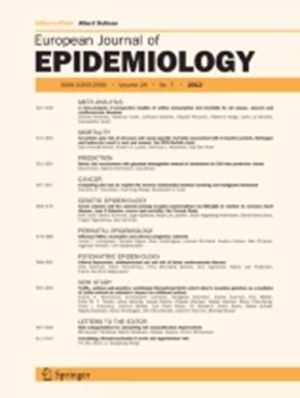移植线,一个实体器官移植受者和供者的生物库和队列研究。
IF 5.9
1区 医学
Q1 PUBLIC, ENVIRONMENTAL & OCCUPATIONAL HEALTH
引用次数: 0
摘要
TransplantLines生物库和队列研究(NCT03272841)是荷兰格罗宁根大学医学中心进行的一项正在进行的前瞻性研究。TransplantLines旨在确定与实体器官移植和捐赠后健康问题相关的危险因素和生物标志物。此外,该研究旨在开发新的干预措施,以减轻症状负担并改善长期结果,包括与健康相关的生活质量、心血管并发症、移植物衰竭和死亡率。它包括接受心脏、肝脏、肺、肾脏、胰腺和小肠(联合)移植的人,以及活体肝脏和肾脏捐赠者,以及已故的(多)器官捐赠者。生物样本库包含广泛的生物材料,包括全血、血清、edta血浆、灰褐色皮毛、24小时尿液样本、粪便、头发、指甲和组织。数据收集包括身体和认知评估、广泛的实验室分析、宏基因组测序和问卷调查。TransplantLines于2015年发起,截至2024年10月,共有5143名参与者,其中2312名(45%)为女性。移植时的平均年龄为50(±16)岁,活体捐献时的平均年龄为55(±11)岁,死者捐献时的平均年龄为56(±15)岁。包括横截面和纵向的生物材料和数据。对于受者,纵向生物材料和数据收集于:移植前、移植时以及移植后3、6、12、24和60个月。对于活体供者,在捐赠前、捐赠后、捐赠后3个月和/或捐赠后5年或10年收集数据。本文章由计算机程序翻译,如有差异,请以英文原文为准。
TransplantLines, a biobank and cohort study of solid organ transplant recipients and donors.
The TransplantLines Biobank and Cohort Study (NCT03272841) is an ongoing prospective study conducted at the University Medical Centre Groningen, The Netherlands. TransplantLines aims to identify risk factors and biomarkers associated with health problems following solid organ transplantation and donation. Additionally, the study seeks to develop new interventions to reduce symptom burden and improve long-term outcomes, including health-related quality of life, cardiovascular complications, graft failure, and mortality. It includes recipients of (combined) heart, liver, lung, kidney, pancreas, and small bowel transplants, as well as living liver and kidney donors, and deceased (multi-)organ donors. The biobank contains a wide range of biomaterials including whole blood, serum, EDTA-plasma, buffy coat, 24-h urine samples, faeces, hair, nails, and tissues. Data collection includes physical and cognitive assessments, extensive laboratory analysis, metagenomic sequencing, and questionnaires. TransplantLines, initiated in 2015, consists of 5143 participants as of October 2024, among 2312 (45%) females. The mean age was 50 (± 16) years at transplantation, 55 (± 11) years at living donation and 56 (± 15) years at deceased donation. Both cross-sectional and longitudinal biomaterials and data are included. For recipients, longitudinal biomaterials and data were collected at: pre-transplantation, at transplantation, and at 3, 6, 12, 24, and 60 months post-transplantation. For living donors, data were collected at pre-donation, donation, 3 months post-donation, and/or 5 or 10 years post-donation.
求助全文
通过发布文献求助,成功后即可免费获取论文全文。
去求助
来源期刊

European Journal of Epidemiology
医学-公共卫生、环境卫生与职业卫生
CiteScore
21.40
自引率
1.50%
发文量
109
审稿时长
6-12 weeks
期刊介绍:
The European Journal of Epidemiology, established in 1985, is a peer-reviewed publication that provides a platform for discussions on epidemiology in its broadest sense. It covers various aspects of epidemiologic research and statistical methods. The journal facilitates communication between researchers, educators, and practitioners in epidemiology, including those in clinical and community medicine. Contributions from diverse fields such as public health, preventive medicine, clinical medicine, health economics, and computational biology and data science, in relation to health and disease, are encouraged. While accepting submissions from all over the world, the journal particularly emphasizes European topics relevant to epidemiology. The published articles consist of empirical research findings, developments in methodology, and opinion pieces.
 求助内容:
求助内容: 应助结果提醒方式:
应助结果提醒方式:


